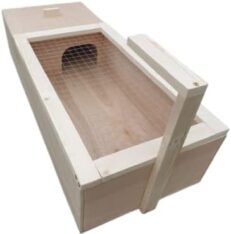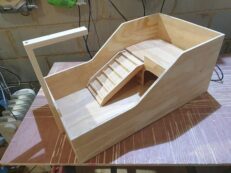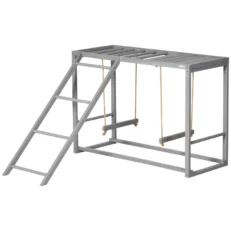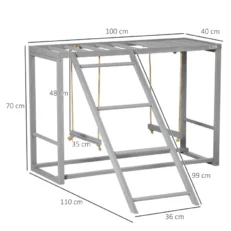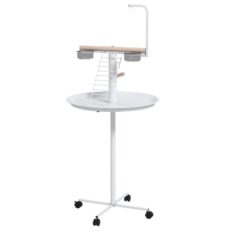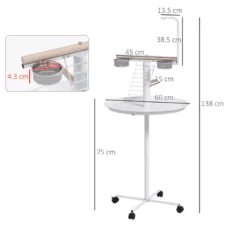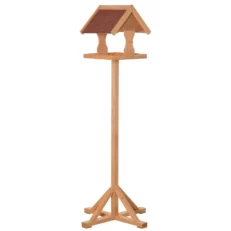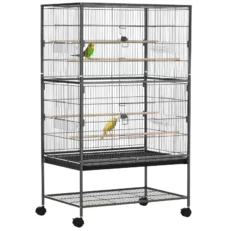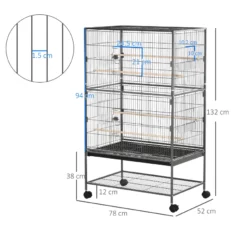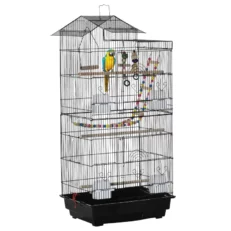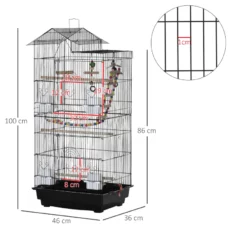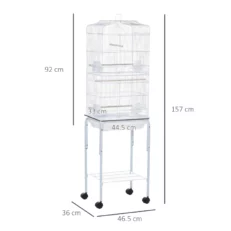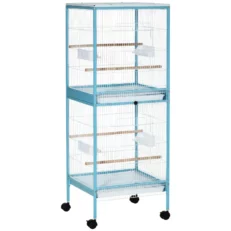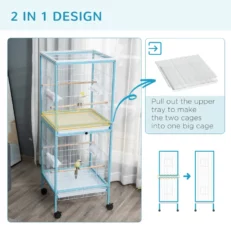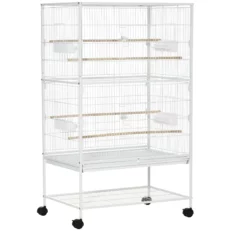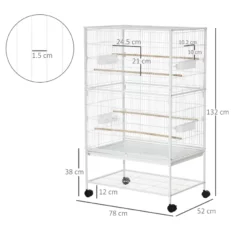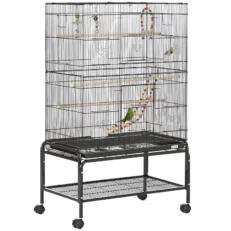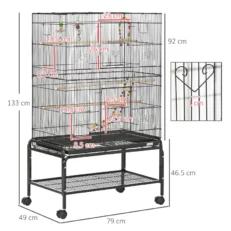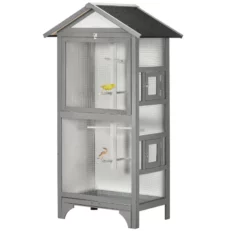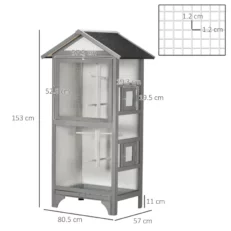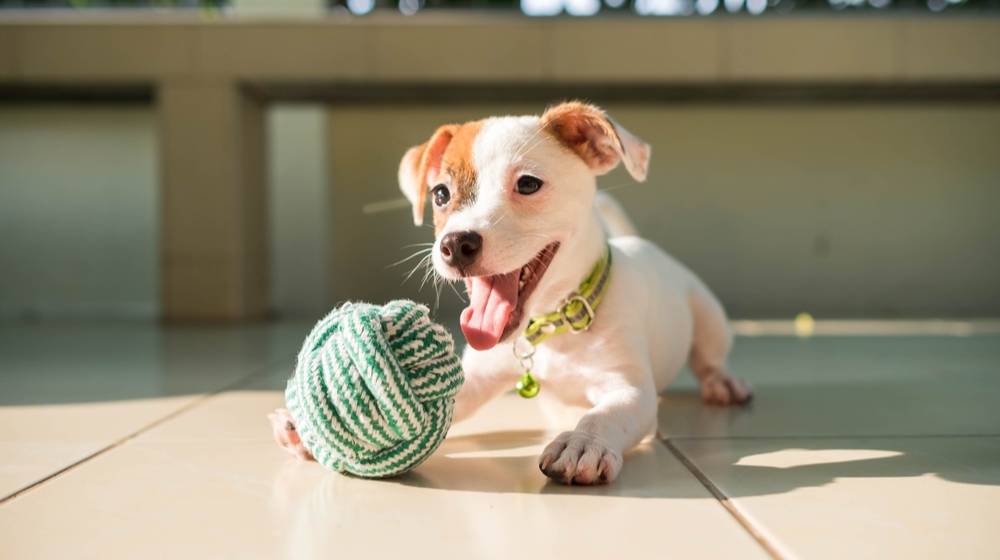
Dogs, those faithful and loving companions, have a unique way of filling our lives with immense joy and laughter. In return, one of the purest forms of love we can offer them is through engaging and playful interaction. Playtime transcends being a mere leisure activity; it’s an integral part of a dog’s life, contributing significantly to their physical and mental well-being. In this comprehensive blog, we’re going to dive into the intriguing and rewarding world of do-it-yourself (DIY) dog toys. We’ll explore the profound impact these toys have on the lives of both dogs and their owners, highlighting the multifaceted benefits that come with crafting and using these playful creations.
The concept of playtime for dogs goes far beyond simple amusement. It’s a fundamental element of their daily routine, crucial for their holistic health and contentment. Let’s explore why play is so vital for our canine friends:
Promoting Physical Health: Regular physical activity is as crucial for dogs as it is for humans. Play sessions are an excellent way for dogs to engage in much-needed exercise, helping them maintain a healthy physique and preventing issues like obesity. Such activities keep them agile and energized, contributing to their overall physical well-being.
Enhancing Mental Acuity: Mental stimulation is another critical aspect of play. Dogs thrive when their minds are engaged and challenged. Toys that require problem-solving, such as puzzles or interactive games, sharpen their cognitive skills, keeping them mentally alert and warding off boredom-induced behavioral problems.
Fostering Social Skills: Playtime often involves interacting with other dogs or humans, which is essential for developing and honing a dog’s social skills. This interaction is particularly crucial for puppies, as it teaches them vital communication skills and helps them form strong social bonds.
Relieving Stress: Just like humans, dogs can experience stress and anxiety. Engaging in play is an effective way for them to release tension, promoting a sense of relaxation and happiness.
Strengthening Bonds: The time spent playing with your dog isn’t just fun; it’s a cornerstone of your relationship. These shared moments of joy and playfulness forge a deeper, more meaningful connection between you and your furry friend.
Creating your own dog toys is a practice laden with numerous benefits, both practical and emotional:
Economical Solution: Handmade dog toys are often more cost-effective than their store-bought counterparts. You can repurpose everyday household items into exciting toys without breaking the bank.
Personalized Creations: DIY allows you to customize toys based on your dog’s specific preferences and requirements. You can select materials, shapes, and textures that you know will appeal to your pet, ensuring they get the most enjoyment out of them.
Ensuring Safety: By crafting the toys yourself, you have complete control over the materials used, ensuring they are safe, non-toxic, and suitable for your dog.
Unleashing Creativity: Designing and making dog toys can be a fun, imaginative activity for the entire family. It’s an opportunity to express your creativity while providing your dog with unique and stimulating playthings.
In the following sections, we will guide you through a curated selection of 10 DIY dog toys that are simple to make and incredibly enjoyable for your dog. Each toy has been carefully chosen to cater to different aspects of a dog’s play needs, from stimulating their senses to challenging their intellect. We’ll provide step-by-step instructions on how to create each toy, ensuring that they are both fun and safe for your beloved pet. Get ready to embark on a creative journey that will lead to countless hours of entertainment and joy for your four-legged family member. Let the tail-wagging fun begin!
Unleashing Fun and Affection: The World of DIY Dog Toys
Delving into the creation of DIY dog toys is not just a craft; it’s a heartfelt gesture that enriches the lives of our beloved canine companions. This engaging activity extends far beyond simple play; it allows pet owners to intricately tailor toys to the specific likes, dislikes, and needs of their furry friends. By embracing the art of homemade dog toy creation, we can provide our pets with unique sources of entertainment and joy, specifically designed to cater to their individual preferences and behaviors. This guide aims to explore the multifaceted world of DIY dog toys, emphasizing the importance of custom-made toys in enhancing the physical and emotional well-being of our dogs.
Crafting with Purpose: Selecting the Right Materials and Tools
Natural Fabrics for Safety and Durability: The choice of fabric is crucial in DIY dog toy creation. Opting for safe, sturdy fabrics like cotton or fleece is essential. These materials are not only gentle on your dog’s mouth but also strong enough to endure the rigors of play, ensuring both safety and longevity of the toys.
Rope Materials for Interactive Fun: Incorporating materials like cotton rope or bungee cords can add an interactive element to the toys. These ropes are perfect for tug-of-war games, providing a sturdy grip and enduring even the most enthusiastic play sessions.
Eco-Friendly Recyclable Materials: Embracing sustainability, we suggest repurposing common household items like old t-shirts or empty water bottles into innovative toys. It’s an environmentally friendly approach that also adds a personal touch to your dog’s playtime. Ensure these items are clean and free from any harmful residues.
Essential Crafting Tools: Equip yourself with basic yet vital tools such as scissors, needles, and thread. These are indispensable for assembling diverse types of toys, allowing for customization and reinforcement, crucial for a toy’s durability.
Prioritizing Safety in Construction: The importance of using non-toxic, dog-safe materials cannot be overstated. Ensuring the toys are robust and well-constructed will help prevent any unforeseen accidents during play.
Navigating Safety: Materials and Practices to Avoid
Identifying Hazardous Materials: It’s vital to avoid materials that could pose a threat to your dog’s health, such as certain plastics, metals, or toxic paints.
Avoiding Choking Risks: Small parts can be a significant choking hazard for dogs. Ensure all components of the DIY toys are of a safe size and securely attached.
Chemical Awareness: Steer clear of materials treated with harmful chemicals or dyes. Opt for natural or certified safe materials wherever possible.
The Importance of Regular Toy Inspection: Regularly examine homemade toys for signs of damage, such as tears or loose parts, to prevent any potential risks during play.
Personalizing Play: Matching Toys to Your Dog’s Characteristics
Consideration of Size: The size of the toy should be appropriate for your dog’s breed and size. This consideration is crucial for preventing potential choking hazards, especially for smaller breeds, and ensuring durability for larger, more robust dogs.
Catering to Chewing Habits: Dogs have varied chewing behaviors. For those that are vigorous chewers, selecting more durable materials is essential. Conversely, for gentler dogs, softer, plush materials can be more suitable.
Innovative Interactive Toys: Puzzle toys or treat dispensers can significantly stimulate a dog’s mental faculties, keeping them engaged and intellectually stimulated.
Comfort Toys for Gentle Play: For dogs who prefer a more comforting, less vigorous play, creating soft, cuddly toys using materials like fleece or soft cotton can be ideal.
In conclusion, crafting DIY dog toys is a rewarding and heartwarming activity that not only provides endless fun for our pets but also strengthens the bond we share with them. It’s an opportunity to intimately understand and cater to our dogs’ unique preferences, ensuring their playtime is both safe and enjoyable. This guide aims to inspire and encourage pet owners to explore their creativity, paying close attention to their dog’s individual needs and safety in the process.
Revitalizing Playtime with Homemade Tug-of-War Toys
Tug-of-war is a classic game that resonates with the playful nature of dogs, often being a favorite in their play routine. The beauty of this game lies not only in its simplicity but also in the opportunity it presents for eco-friendly practices. By repurposing old t-shirts or towels, we can create durable and enjoyable tug-of-war toys for our canine friends. This approach not only reduces waste but also adds a personal touch to our pet’s toy collection, making playtime both fun and environmentally conscious.
Step-by-Step Guide to Crafting Tug-of-War Ropes from Recycled Materials
Materials Gathering: Look for old t-shirts or towels that are still in good condition. Cotton or a cotton blend works best due to its durability and softness. Avoid materials that fray easily or have loose threads.
Cutting the Fabric: Begin by cutting the fabric into strips, approximately 2-3 inches wide. The length will depend on the size of the toy you want to make. For a standard-sized tug toy, strips about 20-30 inches long are ideal.
Braiding Techniques: To braid the strips into a rope, start by tying a knot at one end of your aligned strips. Then, use a simple three-strand braid technique, ensuring the braid is tight and consistent for added strength.
Securing the Ends: Once you reach the end of your braid, secure it with another tight knot. Make sure both knots are robust to prevent the toy from unraveling during play.
Safety Inspection: After completing the toy, inspect it for any loose threads or weak spots that might pose a risk during play.
Variations for Different Dog Sizes and Strength Levels
Size Adaptation: For larger dogs, consider making the rope thicker by using more strips of fabric or making it longer. Conversely, for smaller breeds, a thinner and shorter rope will be more suitable.
Strength Customization: For stronger dogs, double braiding or using denser fabrics can provide the necessary durability. For smaller breeds, softer and more pliable fabrics will suffice.
Color and Texture Variations: Experiment with different colors and textures to make the toy more appealing to your dog. Mixing fabrics can also add an interesting tactile experience.
Tips for Safe and Enjoyable Play with DIY Tug-of-War Toys
Supervised Play: Always supervise your dog during play to ensure they are safe and to intervene if the play becomes too rough.
Teaching Commands: Use tug-of-war games as an opportunity to teach commands such as “take it” and “leave it,” enhancing your dog’s training and discipline.
Preventing Aggressiveness: Keep the playtime light and fun. If it starts to get too aggressive, take a break and redirect your dog’s attention.
Regular Toy Inspection: Routinely check the toy for signs of wear and tear, replacing it when necessary to avoid any risks.
In conclusion, making your own tug-of-war toys is a rewarding and environmentally friendly way to enhance your dog’s playtime. These homemade toys not only provide endless fun but also open up avenues for bonding and training. We encourage you to experiment with different variations and observe which designs best suit your pet’s preferences and play style.
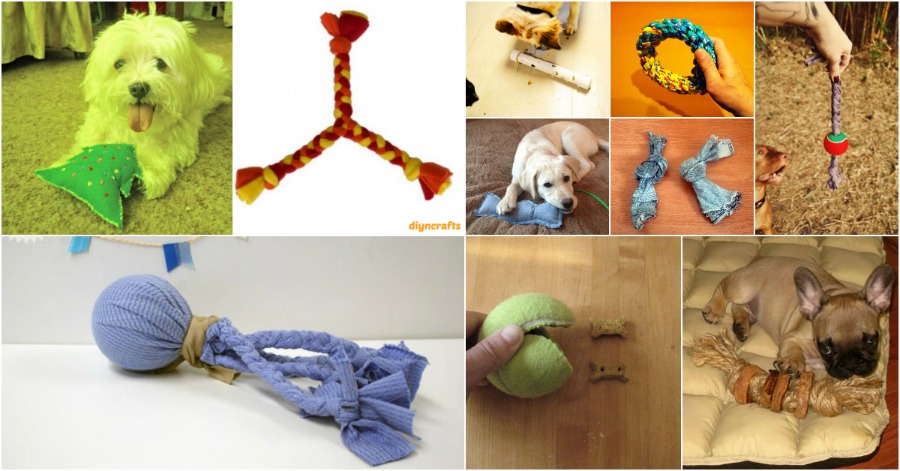
Unleashing the Power of Mental Stimulation for Dogs through DIY Puzzle Toys
Mental stimulation plays a crucial role in the well-being of our canine companions, just as important as their physical health. In the realm of dog care, an innovative and rewarding way to engage your pet’s intellect is through DIY puzzle toys made from everyday household items. These homemade toys provide a fun, interactive way to challenge your dog’s problem-solving skills, tapping into their natural instincts and keeping them mentally sharp and content.
Crafting the Classic Muffin Tin Puzzle Toy: One popular DIY puzzle toy is the muffin tin puzzle. The simplicity of this toy belies its effectiveness in stimulating a dog’s mind. To create this puzzle, you’ll need a standard muffin tin and a few tennis balls. Begin by placing treats into some of the muffin cups – not all, to increase the challenge. Then, cover each cup with a tennis ball. The goal for your dog is to sniff out the treats and dislodge the balls to claim their reward. This activity not only engages their sense of smell but also encourages physical interaction with the toy.
Assembling an Interactive Bottle Spin Toy: Another engaging puzzle toy is the bottle spin toy. For this, gather a small rod, several plastic bottles, and a sturdy base to secure the setup. Assemble the toy by attaching the bottles around the rod in a manner that allows them to spin freely and then mounting the rod on the base for stability. Place treats inside the bottles. As your dog nudges and spins the bottles, they will be delighted by the treats that fall out. This puzzle not only provides mental stimulation but also a bit of physical exercise.
Creating a Multi-Layered Box Puzzle Game: The box puzzle game is another fantastic way to stimulate your dog’s brain. This game involves using boxes of various sizes, hiding treats in some of them, and then arranging these boxes within each other. The challenge for your dog is to explore and open the boxes to find the hidden treats. This game is excellent for encouraging problem-solving and exploration, and the varying sizes of the boxes add to the complexity and fun of the game.
The Benefits and Customization of DIY Dog Puzzle Toys: The benefits of these DIY puzzle toys are manifold. They aid in preventing boredom, reducing the likelihood of destructive behavior, and contributing to cognitive development. Additionally, these interactive play sessions are great opportunities for bonding between you and your dog. For owners looking to tailor the difficulty level of these puzzles, there are several ways to adjust them. For smarter dogs or those who become adept at these games, you can increase the complexity by adding extra obstacles or hiding the treats more creatively. Conversely, for beginners, you can start with simpler challenges and gradually increase the difficulty. Observing your dog’s reactions and adapting the toys to suit their skill level will keep them continuously engaged and challenged.
In conclusion, creating DIY puzzle toys is an enriching experience that brings numerous benefits to your dog’s life. It’s a creative and economical way to enhance your pet’s daily routine, providing mental stimulation and fun. These toys not only keep your dog’s mind active but also strengthen the bond you share through playful, interactive sessions. We encourage you to experiment with these ideas, observe what best suits your dog, and enjoy the process of making and playing with these innovative puzzle toys. Share your experiences and creations with our community, and join us in discovering more engaging ways to enrich the lives of our beloved canine friends.
Creating Safe and Stimulating DIY Squeaky and Crinkly Toys for Dogs
Engaging a dog’s senses through play is crucial for their overall development and happiness. One effective way to do this is by creating DIY squeaky and crinkly toys. These toys not only provide sensory stimulation but also cater to the natural instincts of dogs. In this guide, we’ll explore how to craft these toys safely at home, ensuring they are both fun and secure for your furry friend.
For DIY squeaky toys, start by choosing safe materials such as soft fabrics like fleece or cotton. These materials are gentle on your dog’s mouth and easy to work with. You can find non-toxic squeakers at pet stores or online, specifically designed for pet toys. When designing and sewing the toy, you can opt for simple patterns, such as a basic bone or ball shape. The key is to securely sew the toy, ensuring that the squeaker is safely enclosed within the fabric. This can be achieved by creating a small pouch inside the toy for the squeaker, ensuring it remains in place and isn’t a choking hazard.
For crinkly toys, materials that make a rustling sound are ideal. Washable plastics or certain types of reusable bags work well for this purpose. When designing these toys, incorporate crinkly material inside fabric casings to create an enticing noise for your dog. It’s essential to ensure that the crinkly material is safely enclosed within the toy. Double-checking that all materials used are non-toxic and safe for dogs is crucial for your pet’s safety.
Squeaky and crinkly toys are more than just playthings; they are vital for mental and physical stimulation. These types of toys can significantly enhance a dog’s auditory experience, providing an enriching sensory playtime. They also appeal to a dog’s natural instincts, such as hunting and exploring, making playtime both fun and instinctually satisfying.
An eco-friendly and creative approach to making these toys is to repurpose household items. Old clothes, for instance, can be turned into either squeaky or crinkly toys by adding squeakers or crinkly materials like plastic. Another idea is to use empty water bottles to create crinkly toys. It’s important to ensure that all repurposed items are clean, safe, and free from any potential hazards.
In summary, creating DIY squeaky and crinkly toys is a wonderful way to enhance your dog’s playtime, providing both mental stimulation and sensory enrichment. While indulging in the creativity of making these toys, always prioritize the safety and well-being of your pet. Encouraging creativity and emphasizing the importance of safety in toy-making will ensure that your homemade toys are not only fun but also a safe source of joy for your dog.
Creating Fun and Safe Fetch Toys for Your Furry Friend
Fetch is a timeless game that dogs of all breeds and sizes love. It’s not just a way to burn off energy, but it also strengthens the bond between you and your pet. To enhance this experience, creating homemade fetch toys like frisbees and soft balls can be both rewarding and safe. In this guide, we’ll explore how to craft these toys and offer tips on training your dog to fetch and return them, ensuring both fun and safety during outdoor play.
Homemade Frisbees: A Blend of Safety and Enjoyment
When it comes to making a homemade frisbee, selecting the right material is key. Lightweight, flexible materials such as nylon fabric or soft rubber are ideal. They are gentle on your dog’s mouth and easy to throw. To construct a durable and safe frisbee, follow simple crafting steps, ensuring the edges are smooth and the disc is sturdy. Additionally, consider designing the frisbee with bright colors or patterns to make it visually appealing and easy to locate during outdoor play.
Soft Balls: Gentle and Safe for All Breeds
For crafting soft balls, the choice of material is crucial for your dog’s safety. Soft, durable fabrics or non-toxic foam materials are recommended. When sewing or assembling the ball, make sure it is sturdy enough to withstand play but soft enough to be safe for catching and biting. The size and texture of the ball should be appropriate for your dog’s breed and size – larger dogs may need bigger, sturdier balls, while smaller breeds can enjoy softer, smaller versions.
Training Your Dog to Fetch and Return Toys
Teaching your dog to fetch and return toys involves patience and consistent training. Start by introducing basic commands like “fetch,” “bring it back,” and “drop it.” Use treats and praises as positive reinforcements to encourage your dog. Break down the training process into simple, manageable steps, allowing your dog to gradually learn and enjoy the game. Consistency and patience are key in ensuring successful training.
Ensuring Safety During Outdoor Fetch Play
Playing fetch safely outdoors requires some considerations. Choose a safe, open space that’s free from hazards where your dog can run freely. Keep weather conditions in mind, ensuring your dog stays hydrated and isn’t overexerted, especially on hot days. Regularly inspect the condition of the toys for any wear and tear that could pose a risk. Supervise play sessions and limit their duration to prevent exhaustion or overheating.
In conclusion, engaging in fetch games with homemade toys can bring immense joy and numerous benefits to both dogs and their owners. It’s a wonderful way to spend quality time outdoors, strengthening the bond with your pet. We encourage creativity in making safe, durable toys and patience in training your dog to fetch and return. By following these tips, you can ensure a fun and secure playtime experience for your furry companion.
Crafting Durable Chew Toys for Dogs: A Guide to Homemade Solutions
Chew toys play a vital role in a dog’s life, offering both a means for healthy chewing and an outlet for boredom. Making your own long-lasting chew toys not only ensures you cater to your dog’s specific needs but also offers a fun and rewarding project. This guide will walk you through creating durable rope and denim toys, focusing on the needs of different dog breeds and ages, and ensuring the safety and longevity of these homemade toys.
Rope Toys: Strength and Durability for Energetic Chewers
Rope toys are excellent for dogs that love to chew and tug. Start by selecting thick, natural-fiber ropes like cotton or jute, known for their durability and safety. Braiding the ropes into tight, sturdy shapes can significantly enhance their longevity. Offer a step-by-step guide on various braiding techniques, suitable for different skill levels. Knotting the rope toys at intervals adds additional strength, making them more challenging and interesting for your dog to chew on.
Denim Toys: Repurposing with a Purpose
Old denim materials are ideal for chew toys due to their durability and texture. Offer simple patterns and designs, such as braided strips or stuffed shapes, that can be easily crafted from old jeans or jackets. Discuss ways to reinforce these toys, like double stitching or adding additional layers of fabric, to ensure they withstand vigorous chewing. Denim toys not only provide a great chewing experience but also help in recycling old clothing.
Understanding the Chewing Needs of Different Breeds and Ages
It’s important to consider that different breeds and ages of dogs have varying chewing needs. Larger breeds often require tougher toys that can withstand intense chewing, while smaller breeds may benefit from softer materials. Puppies, with their developing teeth, need gentler options. Offer advice on selecting the right materials and toy types based on the dog’s breed, size, and age to ensure both enjoyment and safety during play.
Ensuring Safety: Monitoring Wear and Tear of Chew Toys
Regular inspection of chew toys is crucial to ensure they remain safe for use. Describe signs of damage, such as fraying or small torn pieces, that indicate a toy has become unsafe and should be replaced. Offer guidelines on how to safely dispose of damaged toys and advise on maintaining safe chewing practices, including supervising playtime to prevent accidental ingestion of toy parts.
In summary, providing durable and safe chew toys is essential for the well-being and satisfaction of active chewers. Encourage creativity in making these toys, and emphasize the importance of attentiveness to your dog’s specific safety and chewing needs. Homemade chew toys not only offer a cost-effective solution but also allow for personalization and adaptation to your dog’s preferences, making playtime both enjoyable and beneficial.
10 Easy DIY Dog Toys to Delight Your Furry Friend
Creating DIY dog toys is a fun and budget-friendly way to keep your furry friend entertained. Here’s a list of 10 easy DIY dog toys you can make at home, along with instructions for each:
T-shirt Tug Toy
- Cut an old t-shirt into strips.
- Braid the strips tightly and knot the ends.
- Great for tug-of-war games.
Sock Ball
- Take an old sock and a tennis ball.
- Place the ball inside the sock and tie a knot at the end.
- Perfect for fetch games.
Bottle Crunch Toy
- Use an empty plastic water bottle.
- Place it inside a sturdy fabric like denim or canvas.
- Sew the fabric closed, leaving the bottle crunchy inside.
- It makes a satisfying noise for dogs.
Rope Chew Toy
- Get some cotton rope and cut it to your desired length.
- Knot it at intervals for grip.
- Good for chewing and tug-of-war.
Fleece Braided Ring
- Cut three long strips of fleece.
- Braid them together and join the ends to form a ring.
- Soft and great for fetching.
Puzzle Toy
- Use a muffin tin and tennis balls.
- Hide treats in some of the muffin tin holes and cover all holes with tennis balls.
- Encourages your dog to think as they find the treats.
Denim Knot Toy
- Cut strips from old denim jeans.
- Braid the strips and knot the ends.
- Durable for strong chewers.
Tennis Ball Sock Flinger
- Place a tennis ball in a sock.
- Knot the sock near the ball, leaving a long tail.
- Great for flinging the ball far during fetch games.
Interactive Treat Dispenser
- Use a small plastic container with a lid (like a yogurt pot).
- Cut small holes in it, just big enough for treats to fall out.
- Fill it with treats and close the lid. As your dog rolls it, treats will fall out.
Cardboard Box Puzzle
- Take a small cardboard box.
- Hide treats inside and close it.
- Let your dog figure out how to open it to get the treats.
Remember to supervise your dog with these homemade toys, especially the first few times they play with them, to ensure they’re safe and suitable for your pet’s play style. Enjoy crafting and playing!
Conclusion
The journey of creating DIY dog toys is a delightful exploration into the diverse needs and joys of our canine companions. We’ve delved into a range of toys, each serving a unique purpose and offering distinct benefits. From the dynamic interaction encouraged by tug-of-war ropes to the cognitive stimulation provided by puzzle toys, the sensory engagement from squeaky and crinkly toys, the energetic fun of fetch and retrieve games, to the satisfying resilience of durable chew toys, our guide has covered an extensive variety of homemade toys. These toys not only cater to various aspects of a dog’s physical and mental health but also enrich their daily lives with joy and engagement.
Maintaining the longevity and safety of these homemade toys is crucial. Different toys require different cleaning methods; fabric toys are generally machine washable, but it’s important to use pet-safe detergents and to avoid harsh chemicals that could harm your pet. Rope toys, on the other hand, might need gentle hand washing to maintain their integrity. Regular maintenance checks are essential for ensuring the toys remain safe for play. This involves inspecting the toys for signs of wear, such as fraying, loose threads, or tears, and being proactive in repairing or replacing them to ensure the ongoing safety of your furry friend.
Appropriate storage of these toys is also key to preserving their condition. Keeping them in a clean, dry place will prevent them from becoming dirty or damaged. Moreover, periodically rotating the toys can help keep your dog interested and engaged, thereby extending the life of each toy.
The process of crafting these toys offers a unique opportunity for pet owners to tap into their creativity and resourcefulness. Personalizing toys to match your dog’s specific preferences and needs not only results in a more engaging playtime for your pet but also deepens the bond you share. This creative process is a journey of understanding and catering to the unique quirks and play patterns of your dog.
Furthermore, sharing these homemade creations and experiences within a community of DIY pet enthusiasts fosters a sense of camaraderie and collective learning. Such interactions can inspire new ideas, offer solutions to common challenges, and enhance the overall experience of creating and playing with DIY dog toys.
In summing up, the creation of DIY dog toys is more than just a crafting endeavor; it’s a pathway to enriching your dog’s life with variety, fun, and stimulation. It encourages a deeper understanding and connection between pet and owner, fostering a harmonious and joyful relationship. Embrace this creative journey, and revel in the unique bond it nurtures with your canine companion.

